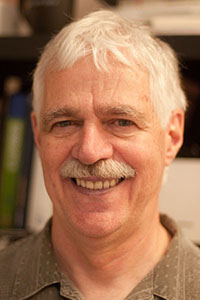Personal information
Gilles Fontaine
 Département de physique Université de Montréal C.P. 6128, Succursale Centre-Ville Montréal, QC Canada H3C 3J7 Phone: 514-343-6680 Fax: 514-343-2071 Email: fontaine@astro.umontreal.ca Office: F-415 |
Research field: White dwarf stars; asterosismology; exoplanets.
Description of the research project:
Gilles Fontaine has made remarkable scientific breakthroughs in at least three areas of the astrophysics of white dwarf stars. Each of his contributions alone could have given him the status of a world leader. Together, these discoveries make him a world-wide specialist on white dwarf stars.
His team has demonstrated that white dwarf stars have much to teach us about the behavior of matter in extreme conditions and on the evolution of stars. Using instruments he help build, Professor Fontaine has developed remarkably effective theoretical and observation tools that are now being used around the world. Some of the methods he has developed have been used to determine the age of our galaxy�s disk and to evaluate the age of the universe.
Gilles Fontaine's research activities in asterosismology and stellar evolution have recently led him to take an interest in the fascinating challenges posed by the characterization of exoplanets, one of the major stakes of contemporary astrophysics. Most of the time, the properties of an exoplanet can only be determined if the fundamental characteristics of its parent star are known.
In this respect, the asteroseismological method proves to be a tool of choice and, if carried out in the right way, enables us to determine with great precision the structural parameters of a pulsating star, its internal stratification and its age. It is research pathway that Gilles Fontaine has begun to explore and that has already proved its worth in the cases of planets that have been discovered around pulsating stars
It also appears that an large and growing number of white dwarf stars bear the signature of planetary debris, which has opened the possibility of determining the bulk composition of these rubbles, a unique tool in planetology. The potential is immense and very promising. In this case, white dwarfs play the role of a "substrate" on which the heavy elements from the planetary rubbles are deposited; however, this substrate is permeable and allows these elements to go through at various rates, depending on the species.
In collaboration with his colleagues Patrick Dufour and Pierre Brassard, an expert in numerical computation, Gilles Fontaine hopes to soon be able to effectively simulate the episodes of accretion-diffusion of planetary debris on white dwarf stars
Prix et distinctions:
- 2016-06 : Médaille 2016 de l'ACP pour contributions exceptionnelles à la physique, Association canadienne des physiciens et physiciennes (ACP)
- 2013-01 : Top 10 des découvertes de l'année 2012 , Revue Québec Science
- 2012-07 à 2013-06 : Président d'honneur, Université de Liège (Belgique)
- 2008-06 à 2015-05 : Chaire de recherche du Canada en astrophysique stellaire
- 2000-05 : Prix Carlyle S. Beals, CASCA
- 1999-06 : Prix Marie-Victorin, Gouvernement du Québec
- 1999-05 : Prix d'excellence en enseignement, Université de Montréal
- 1998-05 : Prix d'excellence en enseignement, Faculté des arts et des sciences
- 1992-06 : Membre de l'Académie des sciences, Société royale du Canada
- 1991-01 : Douze grands chercheurs canadiens, CRSNG
- 1990-09 à 1992-08 : Boursier de recherche Killam, Conseil des arts du Canada
- 1990-01 : Prix de l'auteur, Acfas
- 1989-01 : Prix Urgel-Archambault, Acfas
- 1987-06 : Prix E.W.R Steacie, Fondation Steacie CNRC
- 1986-09 à 1988-08 : Boursier de recherche E.W.R. Steacie
 Groupe d\’astrophysique de l\’Université de Montréal
Groupe d\’astrophysique de l\’Université de Montréal